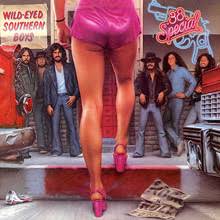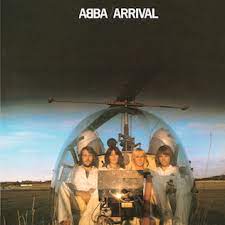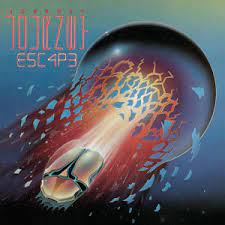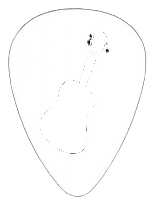🎸 Best 70s British Rock Bands Guitar Songs
The 1970s were a golden era for British rock music — a decade that gave us timeless guitar-driven hits from bands whose sound shaped generations.
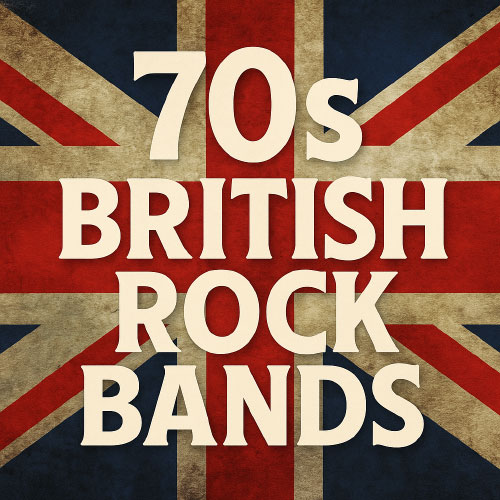
On this page, you’ll find classic guitar songs from iconic groups like Pink Floyd, T-Rex, Badfinger, Thin Lizzy, Emerson, Lake & Palmer, Foghat, Christie, Faces, Golden Earring, and White Plains.
Each band brought its own style — from psychedelic and progressive rock to glam, blues, and melodic pop-rock — creating a soundscape that still inspires guitarists around the world today.
🎸 Overview Video -
“Watch This Preview of My
70s British Rock Bands”
70s British Rock Bands List
1. Badfinger --- Baby Blue, No Matter What, Day After Day2. Christie --- San Bernedino, Yellow River
3. Emerson Lake & Palmer --- Affairs Of The Heart, From The Beginning, Lucky Man
4. Faces --- Stay With Me
5. Foghat --- Slow Ride
6. Golden Earring --- Going To The Run, Radar Love, Twilight Zone
7. Pink Floyd --- Another Brick On The Wall, Fearless, Wish You Were Here
8. T-Rex --- Get It On
9. Thin Lizzy --- Dancing In The Moonlight, Jailbreak, The Boys Are Back In Town
10. White Plains --- My Baby Loves Lovin
11. Wizzard --- See My Baby Jive
1. Badfinger Songs- Learn To Play On Guitar
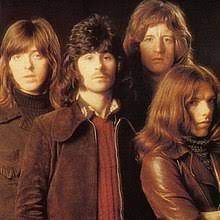
Baby Blue is one of Badfinger's most iconic songs, featured on their 1971 album "Straight Up." The song was a significant success for the band, reaching No. 14 on the Billboard Hot 100 chart in the United States.
Written by Pete Ham, the song's melodic and catchy sound struck a chord with listeners, making it a memorable part of the power pop genre. Its chart success solidified Badfinger as a prominent force in the early 1970s rock and pop music scene.
A noteworthy piece of trivia about "Baby Blue" is its role in the television series "Breaking Bad." The song was featured in the series finale, and this exposure led to a resurgence of interest in the song and Badfinger's music.
Chords And Strumming
I play this one with capo 2nd fret with a down up down down and repeat rhythm pattern with no lead. The chords here are A, E, D, A/Db, G, Bm, Dbm, Gbm, Gbm/F, C and Bm/A.
Guitar Lesson Details - (chords & lyrics sheet incl with lesson)
Back To Song List
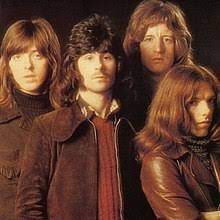
Day After Day is another notable track from Badfinger's 1971 album "Straight Up." Written by Pete Ham, the song became one of the band's most recognizable hits, reaching No. 4 on the Billboard Hot 100 chart in the United States.
"Day After Day" has continued to enjoy popularity over the years, with its timeless melody making it a favorite choice for radio play and inclusion in various compilations of classic rock songs.
One interesting piece of trivia about the song is that it features George Harrison of The Beatles on slide guitar. Harrison's contribution to the song added a distinctive and memorable element to its sound.
Chords And Strumming
I use a drop D tuning here with a capo 3rd fret with some lead. Some lead required with a down down up down up down up and repeat rhythm pattern. The chords here are D, G, A, C, D/Em and D/Gb.
Guitar Lesson Details - (chords & lyrics sheet incl with lesson)
Back To Song List
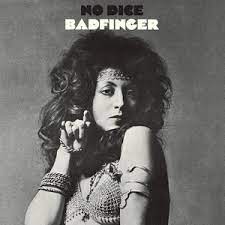
No Matter What is a classic rock song by Badfinger, featured on their 1970 album "No Dice." This track, written by Pete Ham, stands as one of the band's signature tunes and exemplifies their talent for crafting infectious rock melodies.
"No Matter What" made a significant impact on the music scene, reaching No. 8 on the Billboard Hot 100 chart in the United States.
Over the years, "No Matter What" has maintained its popularity, becoming a staple in classic rock radio playlists and compilation albums.
One interesting piece of trivia about the song is that it was produced by the legendary Todd Rundgren, adding an extra layer of musical excellence to the track.
Chords And Strumming
I play a down down up up down up and repeat rhythm pattern in standard tuning. Some lead required with the chords G, C, D, Am, Em, A7, D7 and an F.
Guitar Lesson Details - (chords & lyrics sheet incl with lesson)
Back To Song List
2. Christie Songs - Learn To Play On Guitar
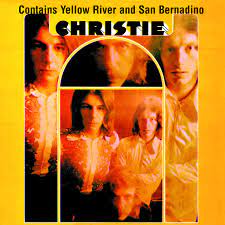
San Bernadino was a single from the debut album from Christie called Christie in 1970.
The song was a top 10 in several countries and hit #1 in Switzerland.
Chords And Strumming
The chords in this one are D, Gbm, Bm, G and A with a down down up down up down up rhythm pattern in standard tuning. There are a few chord riffs but no lead work in this one.
Guitar Lesson Details - (chords & lyrics sheet incl with lesson)
Back To Song List
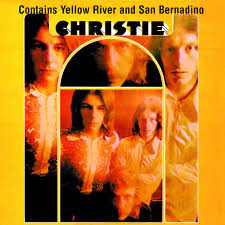
Yellow River was a huge song for the band Christie when it was released as a single in 1970 from their album Christie.
The song went on to be a #1 in several places in Europe including the UK, and reached #23 in the US.
Chords And Strumming
You have an option to play a little bass in the rhythm with this one playing a down up pause up rhythm pattern as you'll see as the song progresses. Playing the C chord you'll see a G bass being played so you can use that or leave it out.
The chords are C, Em, Am, Dm, G, and an F. So shuffle picking in this one.
Guitar Lesson Details - (chords & lyrics sheet incl with lesson)
Back To Song List
3. Emerson Lake & Palmer Songs - Learn To Play On Guitar
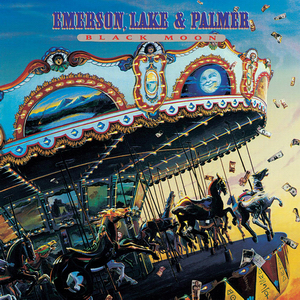
Affairs Of The Heart was a single from the bands 1992 album Black Moon, but it failed to chart anywhere. Their other single Black Moon, also failed to chart.
Chords And Strumming
They play this one with a capo 2nd fret or in E but I'm playing it lower in D with drop D tuning but that is always optional. For rhythm play a down down up down up down up down up down up down up and repeat pattern in a steady shuffle. No lead in this one as you move through the chords D, G, A, F, C, Am and an E.
Guitar Lesson Details - (chords & lyrics sheet incl with lesson)
Back To Song List
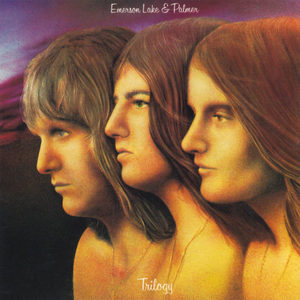
From The Beginning hails from the 1972 Trilogy album and made it to #39 in the US, which was the bands highest charting single.
Chords And Strumming
This one has a 1-2- up down down up down up pattern going on in standard tuning. The chords you'll need are Am7, D7, C, G6, Am, F and an Fmaj7-5 with some variations on these as explained in the full tutorial. No lead in this one.
Guitar Lesson Details - (chords & lyrics sheet incl with lesson)
Back To Song List
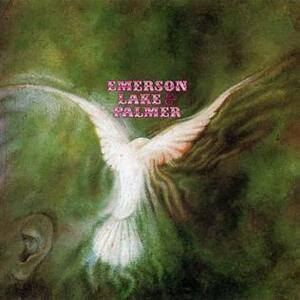
Lucky Man is a song by the band Emerson, Lake & Palmer, from their first album released in 1970. It was written by Greg Lake when he was only 12 years old. The song features one of the earliest Moog synthesizer solos in rock music.
Released as a single in 1970, it made it to the top 20 in the Netherlands and also charted in the United States and Canada. The single was released again in 1973 and charted once more in the U.S. and Canada.
Chords And Strumming
I use a down down up down up rhythm pattern that repeats with drop D tuning. Play the chords D, G, Am, Em and I include a picking break within the rhythm.
Guitar Lesson Details - (chords & lyrics sheet incl with lesson)
Back To Song List
4. Faces Songs - Learn To Play On Guitar
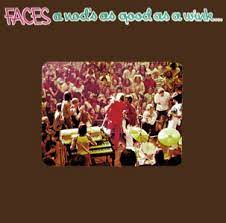
Stay With Me was this bands only major hit when it was released as a single back in 1971. Faces of course was a band in which both Rod Stewart and Ronnie Wood were both members.
The song if from their 3rd album "A Nod Is As Good As A Wink". The song reached #4 in Canada, #6 in the UK and #17 in the US.
Chords And Strumming
This one I play in standard tuning with a capo 2nd fret. For rhythm play a down up down up shuffle then use a down down down up down up and repeat patter. A few riffs in this one with the chords D, C, G and A.
Guitar Lesson Details - (chords & lyrics sheet incl with lesson)
Back To Song List
5. Foghat Songs - Learn To Play On Guitar

Slow Ride is a track from the English band Foghat's 1975 album Fool For The City. The song was the bands highest charting single, reaching #20 in the US and #14 in Canada.
Chords And Strumming
A steady down up down up rhythm pattern works for this one in standard tuning. The chords you'll need and an A, D, C and a Gbm. Be prepared for a bit of lead as well.
Guitar Lesson Details - (chords & lyrics sheet incl with lesson)
Back To Song List
6. Golden Earring - Learn To Play On Guitar
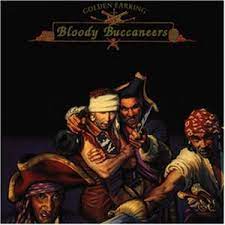
Going To The Run by Golden Earring is on their album called "Bloody Buccaneers," released in 1991. They also put out the song as a single, and it did really well on the charts, especially in the Netherlands, where it reached number 3.
The music video for the song is cool, directed by Dick Maas, a Dutch film director. In the video, a motorcycle rider crashes and gets taken care of by a nurse. People love this song because it's emotional and has strong music.
The success of "Going to the Run" and the "Bloody Buccaneers" album helped Golden Earring become popular again in the early 1990s.
Chords And Strumming
For chords here you'll need a G, Em, C, D, Am, B7 with a few riffs and in standard tuning. Play an arpeggio to start and then down down up down up and repeat rhythm pattern.
Guitar Lesson Details - (chords & lyrics sheet incl with lesson)
Back To Song List
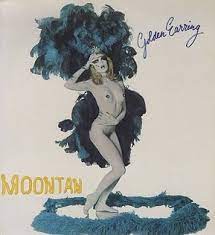
Radar Love was a huge hit for Golden Earring back in 1973 when it was released as a single from their album "Moontan." The song reached the #1 spot in the Netherlands, #6 in Belgium, #7 in the UK, and #13 in the United States.
This track marked Golden Earring's first entry into the US Rock Charts. While music videos were not as common in the 1970s, there was a promotional film for "Radar Love." The video showed the band performing the song in a studio, mixed with driving scenes and images related to the song's theme of being on the road.
The song's lyrics, written by Barry Hay and George Kooymans, talk about freedom and adventure, capturing the spirit of the open road. The term "Radar Love" reflects a strong connection between people, even over long distances.
Chords And Strumming
The chords here are Gbm, A, E, D and Db with some lead in standard tuning. For rhythm here play a down stroke and a down down up down up down up in the chorus.
Guitar Lesson Details - (chords & lyrics sheet incl with lesson)
Back To Song List
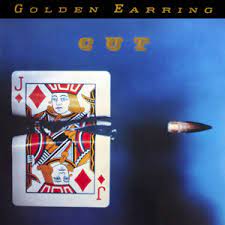
Twilight Zone by Golden Earring, released in 1982 from their "Cut" album, was a big hit for the band. It topped the charts in the Netherlands at #1 and did well in other countries, reaching #5 in Belgium and #10 in the United States.
This made it their highest-charting single in the US. The music video for "Twilight Zone" is cool, directed by Dick Maas. It combines live-action and animated parts, creating a unique and interesting visual experience that matches the mysterious feel of the song.
"Twilight Zone" has been featured in movies, TV shows, and commercials, showing its lasting popularity. It's a song that helped Golden Earring continue to be known for creating memorable and successful music in the rock genre.
Chords And Strumming
Some lead required here with a down down up down down up and repeat rhythm pattern in standard tuning. The chords here are Bm, Em, Gb, A, G and Gbsus.
Guitar Lesson Details - (chords & lyrics sheet incl with lesson)
Back To Song List
7. Pink Floyd Songs - Learn To Play On Guitar

- Another Brick In The Wall is one of Pink Floyd's most famous songs and a standout track from their iconic 1979 album, "The Wall." The song is actually divided into three parts, creatively titled "Part 1," "Part 2," and "Part 3," each with its own unique characteristics.
"Another Brick in the Wall" became a massive hit for Pink Floyd, reaching number one on the charts in multiple countries, including the US and several European nations.
Chords And Strumming
This one is played with a shuffle pattern using the chords Dm, F, C and G using Drop D tuning. A few riffs and a bit of picking is required for a solo performance.
Guitar Lesson Details - (chords & lyrics sheet incl with lesson)
Back To Song List

Fearless is a song by Pink Floyd from their album "Meddle," released in 1971. While it wasn't released as a single and didn't make it onto the charts, it's still a beloved track among fans.
The song has a calm and soothing vibe, with acoustic guitar and gentle vocals. One of its most distinctive features is the use of a crowd singing and chanting "You'll Never Walk Alone" toward the end, which creates a powerful and uplifting atmosphere.
This one is played in standard tuning with a down down up down up down up rhythm pattern and some riffs and some lead play as you'll see in my demo below. The chords you'll need are G, A#, C, A and a D.
Chords And Strumming
This one is played in standard tuning with a down down up down up down up rhythm pattern and some riffs and some lead play as you'll see in my demo below. The chords you'll need are G, A#, C, A and a D.
Guitar Lesson Details - (chords & lyrics sheet incl with lesson)
Back To Song List
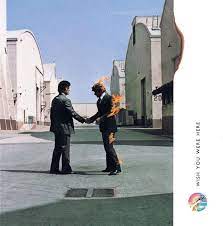
Wish You Were Here is a heartfelt song by Pink Floyd from their 1975 album of the same name. Even though it wasn't released as a single, it's often considered one of their greatest songs.
The lyrics express feelings of longing and nostalgia, reflecting on the absence of someone important. The music features beautiful acoustic guitar melodies and emotive vocals, creating a deeply moving experience for listeners.
While a live version of the song was released as a single in 1995, it didn't make it onto the charts. Nonetheless, "Wish You Were Here" remains a beloved classic in Pink Floyd's catalog.
Chords And Strumming
I play this one with a down down up down up - down up down up down up rhythm and repeat in standard tuning. There are also a few riffs as you move through this one while plying the chords Em, G, A, C, D, Am and an Asus.
Guitar Lesson Details - (chords & lyrics sheet incl with lesson)
Back To Song List
8. T-Rex Songs - Learn To Play On Guitar
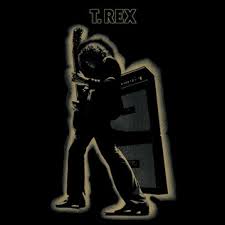
Get It On was released in 1971 by T. Rex (titled "Bang a Gong (Get It On)" in North America) is one of the most iconic glam rock tracks of the era. Featured on the band’s breakthrough album Electric Warrior, the song became a defining anthem for Marc Bolan and the glam rock movement.
It reached #1 on the UK Singles Chart and climbed to #10 on the Billboard Hot 100 in the U.S., helping to introduce American audiences to the British glam scene. With its infectious groove, sultry vocals, and layered production, “Get It On” blends rock and roll swagger with a seductive, bluesy edge. T
rivia lovers might enjoy knowing that the track features Rick Wakeman of Yes on piano and was inspired by Chuck Berry’s “Little Queenie,” which Bolan directly references in the lyrics.
Chords And Strumming
Played in standard tuning you can play mainly down strokes with a few up strokes on the E. No real lead in here but few riffs with the chords E, A and a G.
Guitar Lesson Details - (chords & lyrics sheet incl with lesson)
Back To Song List
9. Thin Lizzy Songs - Learn To Play On Guitar
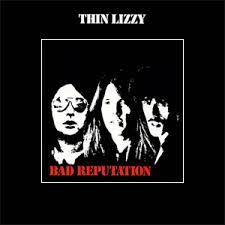
Dancing In The Moonlight is a single from 1977 and can be found on the Thin Lizzy album Bad Reputation.
This song peaked at #14 in the UK and #4 in Ireland. This song title is sometime confused with a King Harvest song with the same name.
Chords And Strumming
I play this with a capo on the 3rd fret using the chords Bm, A, E Dbm and a B. There is a riff in the beginning that is used throughout the song and you'll have a bit of standalone lead in her as well while playing a down down up down up down up rhythm pattern.
Guitar Lesson Details - (chords & lyrics sheet incl with lesson)
Back To Song List
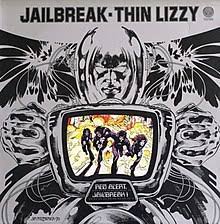
Jailbreak is one of Thin Lizzy's most iconic songs, known for its infectious energy and memorable guitar riffs. It's the title track from their sixth studio album, released in 1976. The song tells the story of a daring prison escape and has become synonymous with Thin Lizzy's signature sound.
While "Jailbreak" didn't achieve significant chart success in North America, it reached number 31 in the UK, solidifying Thin Lizzy's popularity in their homeland and across Europe.
Music videos weren't as prevalent or elaborate as they are today however live performances of "Jailbreak" have been captured on film and video, showcasing the band's electrifying stage presence and Phil Lynott's charismatic performance style.
Chords And Strumming
This one has a choppy rhythm with some steady up and down in places. I'm playing this in Drop D Tuning but it only has four chords which are G, D, Em and an A. There is some lead work in this one.
Guitar Lesson Details - (chords & lyrics sheet incl with lesson)
Back To Song List
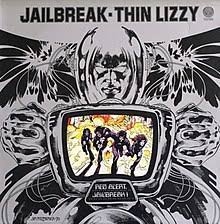
The Boys Are Back In Town is arguably Thin Lizzy's most famous and enduring song. It was released in 1976 as a single from their album "Jailbreak" and quickly became a rock anthem. The single was a #1 in Ireland and hit #8 in Canada and #12 in the US.
Lyrically, "The Boys Are Back in Town" depicts the excitement and camaraderie of a group of friends reuniting and hitting the town for a night of revelry. The lyrics paint a vivid picture of the nightlife scene and capture the feeling of freedom and celebration.
The song's memorable guitar riff, composed by Thin Lizzy's guitarists Scott Gorham and Brian Robertson, has become iconic in the realm of classic rock. It's a driving force behind the song's infectious energy and has made it a favorite among fans and musicians alike.
Chords And Strumming
This one has a down up down up rhythm pattern as well as some quick shuffles in this one. You also have some quick riffs in here. The chord you'll need are G, A, C, Bm, Em, Am7, D, D#, and F.
Guitar Lesson Details - (chords & lyrics sheet incl with lesson)
Back To Song List
10. White Plains Songs - Learn To Play On Guitar
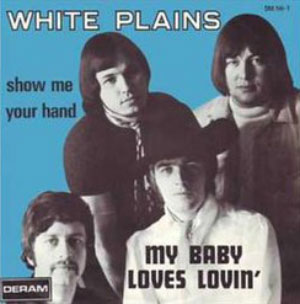
My Baby Loves Lovin was recorded in 1969 but not released by White Plains until Jan of 1970, so technically it's a 70's hit song. The song was a top 10 in several countries reaching it's highest at #4 in Canada.
Chords And Strumming
You can play a down down up down up down up and repeat rhythm pattern as you move through the chords G, Bm, C, Am, D7 and a D#. No lead in this one played in standard tuning but the original key is a capo 3rd fret or play it without the capo in A#.
Guitar Lesson Details - (chords & lyrics sheet incl with lesson)
Back To Song List
11. Wizzard - Learn To Play On Guitar
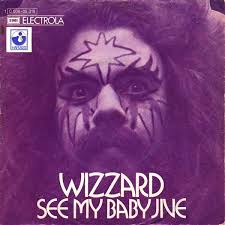
See My Baby Jive is a song recorded by the British band Wizzard and was released as a single in 1973. The song topped the British charts for four weeks and was an influence for ABBA and their song Waterloo.
This track did not appear on any albums by Wizzard for some reason.
Chords And Strumming
Played in standard tuning with a steady down up down up rhythm pattern and some lead required in this one. For chords you'll need a D, G, A, Em, Gmaj7, Gb, B7, B, E, Db/A and a Dbm.
Guitar Lesson Details - (chords & lyrics sheet incl with lesson)
Back To Song List
Whether you’re drawn to the melodic rock harmonies of Badfinger and Christie, the heavy riffs of Thin Lizzy and Foghat, or the experimental brilliance of Pink Floyd and Emerson, Lake & Palmer, these lessons capture the essence of what made 70s British rock unforgettable.
Explore each song’s chords, rhythm patterns, and lead parts to relive the era when British bands ruled the global rock scene — one guitar riff at a time.
If you liked this 70s British Rock bands page you might also like ... (click images)
Acoustic Versions Of Rock Songs
